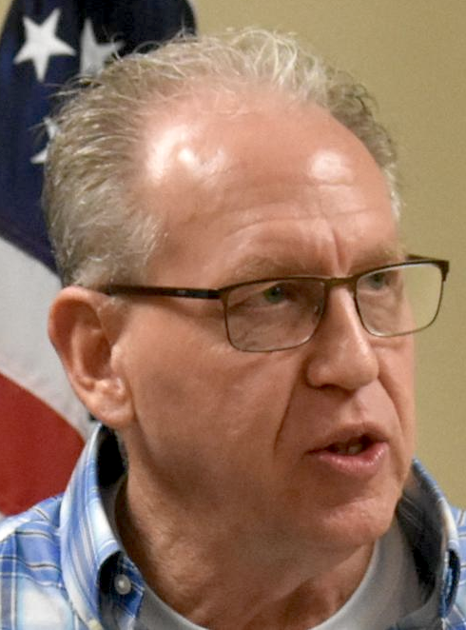
[ad_1]
About one-sixth of the population of the Jackson Purchase region has been fully vaccinated against COVID-19, but nearly half of those age 65 and older have been fully vaccinated.
That means 8.9% of those younger than 65 in the region have been fully vaccinated.
Nationwide, 19.9% of the general population has been fully vaccinated against COVID-19, slightly more than the Purchase area’s 17.1%.
Those numbers are part of the COVID Data Tracker that compiles information for the Centers for Disease Control and Prevention. Those numbers were updated Thursday.
That disparity may be because of the scheduling for the distribution of vaccines in Kentucky’s plan, which focused on providing vaccines to older people first and moving to younger age groups, eventually providing them to almost everyone last week.
Many people may have had the first dose of a vaccine, but have not yet received the second dose.
According to the CDC COVID Data Tracker, of the 195,782 people in the Jackson Purchase, 33,546 people have been fully vaccinated, or 17.1%. Of the 39,185 people 65 or older in the Purchase, 19,558 of them have been fully vaccinated, or 49.9%.
A county-by-county breakdown shows the eight counties in far western Kentucky rank far behind many of the other counties in the state. Only two Purchase counties rank among the top 83 for their general population being fully vaccinated, and four are among the bottom 20.
Marshall County has had 20.2% of its population fully vaccinated, ranking 39th in the state. McCracken County, with 19.7%, ranks 47th.
However, Ballard County, at 12.1%, ranks 117th out of the 120 Kentucky counties, while Hickman County, at 12.9%, ranks 112th. Carlisle County is 105th at 14.3%, while Calloway County is 102nd at 14.7%, Graves County is 98th at 14.8% and Fulton County is 84th at 16.2%.
Kent Koster, the public health director of the Purchase District Health Department, said there may be several reasons why the percentage is lower in more rural counties.
“They don’t have a lot of vaccine providers,” he said. “So, a lot of those folks are going to the regional vaccination clinics or to other vaccination sites that they can get vaccinated at.
“What that data does is it reflects the number of vaccines given by the providers in those counties. We have difficulty finding information that shows by zip code who has been vaccinated. Like the numbers for McCracken County, they show the number of people vaccinated, but not necessarily McCracken County residents.”
Koster added that the state controls how much vaccine an area gets and spoke about how difficult it was for Fulton County to get vaccine.
“The health department was the only player in the county, and we weren’t getting hardly any vaccine,” he said. “Then, the feds finally opened things up for Walmart. The major independent pharmacist down there has been trying to get it for weeks, and he finally got it last week.
“I worked with the state this week, and I think (the Fulton County pharmacist) got 300 doses in this past week, and I’m getting 400 more doses of Moderna in for the next three weeks and an additional 100 doses of Moderna for the health center there.”
Koster said another factor was people’s choice about getting a vaccine.
“The big problem is getting people who don’t want the vaccine interested in getting a vaccine, or those who are riding the fence, like ‘I might get it, I might not get it’ — getting them to make a decision about getting it,” he said.
He said there are several people in western Kentucky refusing to get the vaccine for political reasons, which diminishes the effort to gain herd immunity through vaccination.
“You’ve got some people that are pretty hard-set about not getting the vaccine,” he said. “I don’t know what it’s going to take to get them to help us all out.
“The way the rate’s going right now, they’re talking about herd immunity being 75% of the people getting vaccinated. We’re a long way from that.”
The Pennyrile region on the other side of the Land Between the Lakes area has had representation on both ends of the state’s vaccination rankings. Lyon County ranks 10th in general population being fully vaccinated at 24.1%, but Christian County ranks 119th — next to last — at 10.5%.
Trigg County ranks 36th at 20.3%, Caldwell County is 37th at 20.2%, Livingston County is 46th at 19.8% and Crittenden County is 92nd at 15.5%.
Several locations in the region are providing COVID-19 vaccinations. To find a vaccination site or to find how to make an appointment, visit wpsdlocal6.com and click on the “Vaccination Sites” link.
[ad_2]
Source link





More Stories
Bulk carrier ship Glory grounded in Suez Canal, says shipping agency
Government forced to pay Atos £24mn over Met Office supercomputer procurement
Pharma sector to focus on supply chain, Covid mgmt